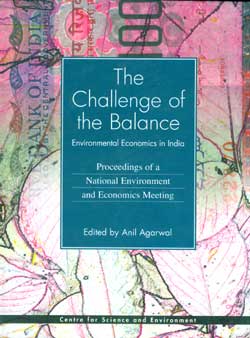
Fatally fixated
function loop() { var popurl="image/20040630/32-illus.jpg" winpops=window.open(popurl,"","width=430,height=375,scrollbars=yes") } In nature, nitrogen remains constant. The Earth's

function loop() { var popurl="image/20040630/32-illus.jpg" winpops=window.open(popurl,"","width=430,height=375,scrollbars=yes") } In nature, nitrogen remains constant. The Earth's
• Labour minister P A Sangma informed Parliament recently that the Centre had approved a Rs 850 crore child labour eradication scheme in the country. • Under the National River
• Over 60 per cent of the catchment area of the Arun river falls in Tibet; little is known about the hydrological behaviour of the river in this part. • inadequate study of the

The issue of sharing West Asia's water resources threatens to explode into another Arab Israeli war, which will shatter the semblance of peace settling over the region.

Plan chalked out to keep marine aliens at bay, but implementation unlikely soon
ALTHOUGH 75 per cent of Earth's surface is covered by water, a very small part of it is available for immediate use. Freshwater for human consumption is limited -- the total freshwater present in the
The World Bank has funded a project to stop the environmental degradation of the Danube delta
The Impact On Urban Transportation By TATHAGATA CHATTERJI Thousands of sleek, little Tata-Nanos are likely to jostle for urban road space within a year. Nano boasts a brilliant design innovation for the all-weather travel requirements of the budget-conscious Indian family. However, the very affordability of the car has raised certain critical questions: If the roads are clogged by millions of new cars, will there be enough space to drive? How does one manage the legitimate aspirations of the Indian family in the urban context? The future of mobility in Indian cities, already teeming with bumper to bumper traffic and exasperated commuters, needs urgently to be addressed as the country moves towards an increasingly urban future along with the structural shift in the economy ~ from agriculture to industry and service. With 285 million people, urban India now accounts for 28 per cent of the country's population, 62 per cent of the GDP and the bulk of the car purchases. Between 1981 and 2001, on an average, the population in the six metro cities increased by 1.8 times but the number of vehicles rose six-fold. In the Delhi-NCR area, 420 million man-hours are lost every month because of traffic congestion, according to ASSOCHAM. With 1,421 cars per square kilometer, Kolkata now has a higher car density than the vastly more affluent Berlin. There has been a spatial shift as well with the IT and the IT-enabled sector emerging as the main factors of the urban economy and frequently locating to self-contained business complexes in the fringe areas of big cities. Such sleepy residential suburbs of the eighties as Gurgaon, NOIDA or Salt Lake, have now overtaken traditional business areas like Connaught Place or Dalhousie Square as corporate destinations of choice. This combined effect of "suburbanization' of the urban economy and the rising road congestion had compelled the state governments to construct highways and flyovers, replicating the American urban model of car dependent, low-density garden suburbs of the 1950s. However, as the Americans found out the hard way, by the 1970s, the ever-increasing freeways resulted in increased use of cars. This led to rising energy cost, pollution and travel time. Delhi is witness to a similar phenomenon today. Amongst the Indian cities, Delhi has the most extensive roadspace along with an elaborate programme of flyover construction. Over the past 10 years, road length increased by 20 per cent, but cars increased by 132 per cent. The ambitious Delhi-Gurgaon Expressway appears to have crossed the carrying capacity estimated for the year 2016 by the time it was inaugurated this year. The 32-lane toll plaza ~ supposedly the largest in Asia ~ has earned the sobriquet, "parking plaza'. Elsewhere, traffic moves fast on the flyovers but gets stuck in bottlenecks down the road. Compare this with New York, London, Paris or Singapore ~ the high temples of international finance ~ cities where people get around on foot, by taxi or via mass transit. Zurich, Melbourne, Copenhagen ~ which frequently tops the urban quality of living index ~ a sort of ATP ranking of the cities, have a dense urban core, pedestrian-friendly streets, a network of high quality mass transit and policies which discourage private cars in core areas. In parts of Tokyo, one cannot own a car unless one owns a private parking space. London introduced congestion charges in city centre areas in 2003. Since then the volume of traffic has been reduced by 21 per cent and delays shortened by two minutes per kilometer. The present gridlocked mess in India is the outcome of short sighted and uncoordinated policies on land use and transportation. According to a Centre for Science & Environment study, a bus carrying 40 passengers occupies about 2.5 times the roadspace than a car with one or two persons and, at the same time, pays 2.6 times higher tax as well. So the poor end up paying in terms of higher travel time and cost. The real estate costs are sky-high but a single parking slot that occupies 23 square metres costs only Rs 10 for a day, whereas a shop or desk space are charged full commercial rates. Diesel subsidies meant for the trucks and buses are gobbled up by chauffer-driven limousines. Public transport is chronically mismanaged and inadequate. The term

The world has lost one third of its natural wealth in 25 years, says a WWF report

The dismal state of aboriginal health Down Under has sounded alarm bells
organic reservoir: Spreading an ultra-thin layer of organic molecules on the surface of reservoirs could prevent millions of cubic metres of water evaporating each year, according to Flexible
SPECULATION is on about the effect of global warming on fish production. The world's marine population is, as it is, subjugate to various factors such as water temperature, salinity, ocean currents,

This time, the US Army has environment on its mind

Militancy s most distressing casualties

Sikkim, a place of great natural beauty, has been neglected by botanists and zoologists. While there is apprehension that many species have already become extinct or endangered, little is being done to conserve its biodiversity
Two video films portray the extremes to which humans go in dealing with other life forms to satisfy their needs.

The number of institutions trying to integrate environmental concerns with economics is still small in India, especially given the size of the country and the diversity of its environmental problems and challenges, but a small beginning has already been made. This volume presents the proceedings of the national environment and economics meeting held in January 1994, in New Delhi.
Lake Turkana Wind Power (LTWP), a firm planning to build a 300 MW windfarm in Kenya, said on Tuesday it had signed an exclusivity deal with Denmark's Vestas and would be signing a final agreement in October. LTWP intends to erect at least 353 wind turbines, each with a capacity of 850 KW, which will be procured from the world's biggest maker of wind turbines, Vestas Wind Systems A/S.

Trade a new thermometer for an old one. This is the message that a bill approved by the US senate seeks to give. While it bans mercury thermometers, it has provided US $20 million for the exchange
Wildlife, marine life, birds and other species in the areas declared ecologically critical remain threatened because of indiscriminate exploitation and pollution of natural resources. People are still unaware of restriction on movement and other prohibitions in the eight critical areas such as Cox's Bazar-Teknaf beach, Sonadia Island, St Martins Island, Hakaluki Haor, Tanguar Haor, Marjaat Baor, Gulshan-Baridhara Lake and a large portion of Sundarban.